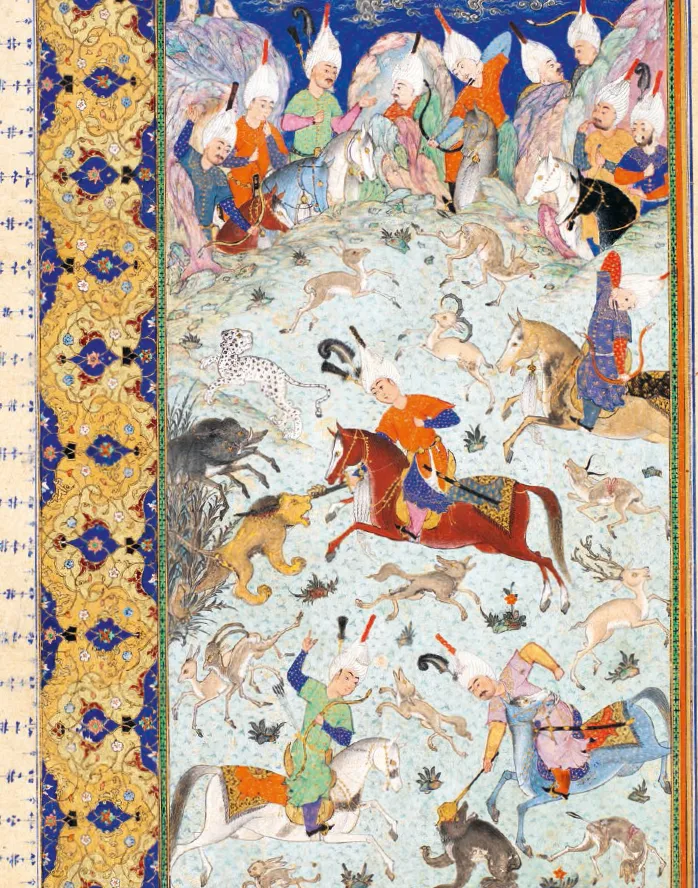
Its meaning determines the theme of the saz style that became one of the most popular Ottoman court styles from the 1540s onward. It was developed from qalam-i siyahi drawings, the roots of which go back to China and inner Asia. The qalam-i siyahi technique was perfected in the Ilkhanid-Mongol courts in western Iran and its most remarkable extant specimens stem from the fourteenth and fifteenth century Ilkhanid, Jalayirid, Timurid and Turkman courts.
A large number of these examples were collected and preserved in albums that were compiled in the fifteenth and sixteenth centuries. Many of them then entered the Ottoman imperial treasury. They all feature far eastern animal themes, dragons, simurghs, chi-lins (Chinese four-legged creatures) and wild animals in combat, or other enchanted forest creatures like fairies (peri). Ottoman saz compositions differ from these earlier examples in the style of the flowers they use and the thin, pointed, feathery, serrated-edged leaves impaling each other that are often described as dagger like (hançeri).
You can learn more about the topic in the book-album "Illustrated copies of the works of 'Ali Shir Nava'i in Istanbul libraries" (XIX volume) from the series "Cultural Legacy of Uzbekistan in the World Collections".
The main sponsor of the project is the oilfield services company Eriell-Group.
